The Dangers Of Wildlife Diseases
Diseases of wildlife can cause significant illness and death to individual animals and can significantly affect wildlife populations. Wildlife species can also serve as natural hosts for certain diseases that affect humans (zoonoses). The disease agents or parasites that cause these zoonotic diseases can be contracted from wildlife directly by bites or contamination, or indirectly through the bite of arthropod vectors such as mosquitoes, ticks, fleas, and mites that have previously fed on an infected animal.
These zoonotic diseases are primarily diseases acquired within a specific locality, and secondarily, diseases of occupation and avocation. Biologists, field assistants, hunters, and other individuals who work directly with wildlife have an increased risk of acquiring these diseases directly from animal hosts or their ectoparasites. Plague, tularemia, and leptospirosis have been acquired in the handling and skinning of rodents, rabbits, and carnivores.
Humans have usually acquired diseases like Colorado tick fever, Rocky Mountain spotted fever, and Lyme disease because they have spent time in optimal habitats of disease vectors and hosts. Therefore, some general precautions should be taken to reduce risks of exposure and prevent infection.
Precautions

Some of the important precautions are:
- Wear protective clothing, particularly disposable rubber or plastic gloves, when dissecting or skinning wild animals.
- Scrub the work area, knives, other tools, and reusable gloves with soap or detergent followed by disinfection with diluted household bleach.
- Avoid eating and drinking while handling or skinning animals and wash hands thoroughly when finished.
- Safely dispose of carcasses and tissues as well as any contaminated disposable items like plastic gloves.
- Cook meat from wild game thoroughly before eating.
- Contact a physician if you become sick following exposure to a wild animal or its ectoparasites. Inform the physician of your possible exposure to a zoonotic disease.
Precautions against acquiring fungal diseases, especially histoplasmosis, should be taken when working in high-risk sites that contain contaminated soil or accumulations of animal feces; for example, under large bird roosts or in buildings or caves containing bat colonies. Wear protective masks to reduce or prevent the inhalation of fungal spores.
Protection from vector-borne diseases in high-risk areas involves personal measures such as using mosquito or tick repellents, wearing special clothing, or simply tucking pant cuffs into socks to increase the chance of finding crawling ticks before they attach. Additional preventive methods include checking your clothing and body and your pets for ticks and removing the ticks promptly after returning from infested sites. If possible, avoid tick-in-fested areas or locations with intense mosquito activity during the transmission season.
Reduce outdoor exposure to mosquitoes especially in early evening hours to diminish the risk of infection with mosquito-borne diseases. Equally important preventive measures are knowledge of the diseases present in the general area and the specific habitats and times of year that present the greatest risk of exposure. Knowledge of and recognition of the early symptoms of the diseases and the conditions of exposure are essential in preventing severe illness.
Disease Types
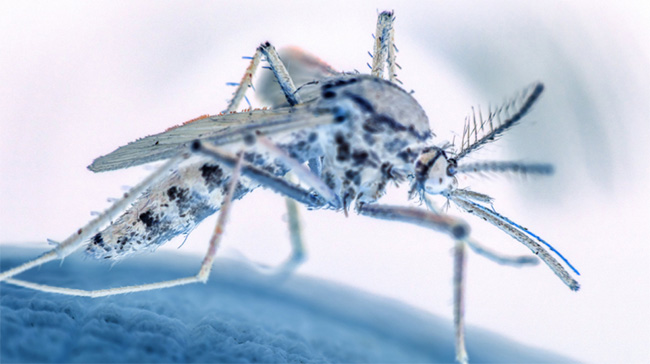
Transmitted Animal Diseases
Rabies
Rabies in wildlife increased dramatically during the 1960s and now accounts for most of the reported animal rabies cases (91% in 1991). Some of the increase in reporting was due to real increases in the number of cases, and some was due to an increased awareness of wildlife rabies, particularly in striped skunks, raccoons, and bats. In 1991, 6,975 cases of animal rabies were reported in 49 states, the District of Columbia, and Puerto Rico. Raccoons (44.2%), striped skunks (29.7%), and various species of bats (9.9%) continued to be the major hosts. Red and gray foxes (4.6%), other wildlife species (2.8%), and domestic animals (8.9%) comprise the remainder of hosts. During the last 2 years, raccoons replaced striped skunks as the major wildlife host in the United States because of the continued expansion of raccoon rabies in the northeastern United States. Animal cases are reported throughout the year, although the number of cases reported reaches a seasonal peak for skunks in March and April, for raccoons in April, and for bats in August.
Clinical Signs
Rabies is considered almost 100% fatal once clinical signs develop. The disease progresses rapidly following the appearance of clinical signs, and the animal dies within a few days. Although abnormal behavior is not diagnostic for rabies (other diseases, like distemper, cause similar behavioral changes), atypical behavior and signs develop following brain infection, and rabies should be suspected whenever wild animals display unusual behavior.
Infected animals usually display either “furious” or “dumb” rabies, although some animals progress through both stages. Skunks, raccoons, foxes, and other canids usually have furious rabies and are unduly aggressive before convulsions and paralysis set in. Some animals, however, have dumb rabies and proceed to tremors and convulsions without agitation or aggression. Other behavioral changes include friendliness or loss of fear, appearance in the daytime for some typically nocturnal species (skunks, bats), unprovoked attacks on anything that moves (including inanimate objects), bewilderment, and aimless wandering. Unusual barking, crying, and frothing at the mouth are additional signs, which are the result of paralysis of the throat muscles. Occasionally, rabid bats are encountered prostrate or fluttering on the ground, unable to fly; they should be handled with care because they can still bite and transmit rabies. Some rabid bats, particularly solitary species like the hoary bat, are aggressive and have been known to attack people. In domestic animals, rabies should be suspected if there is any change in normal habits, such as sudden change in disposition, failure to eat or drink, running into objects, or paralysis.
Transmission
Rabies virus is transmitted primarily via the saliva during the bite of a rabid animal. However, other methods of transmission are possible. Accidental exposure of wounds or cuts to the saliva or tissues of infected animals can occur. The virus is also present in various body organs of infected animals, especially the brain and salivary glands, which poses a health hazard to persons who are field dressing or performing necropsies on these animals. In addition, aerosol exposure has occurred, although rarely, in caves containing very large populations of infected bats. Transmission between animals also occurs by ingestion of infected tissues and by transplacental passage to offspring.
Avoid exposure to any sick or dead animals that are suspected to have rabies. Handle any dead animal with gloves or with a plastic bag that can be turned inside-out to cover and contain the animal. Avoid direct skin contact with the animal. For large animals such as skunks and raccoons, remove the head cautiously and seal it in a plastic bag, avoiding contact or aerosol exposure. Seal the whole animal or head inside an additional plastic bag (double) and keep it cool at all times. Do not freeze the specimen unless a delay of several days is anticipated before it is examined for rabies. Disinfect gloves or knives that were in contact with the animal with a strong detergent or bleach or dispose of them.
Prevention and Treatment
The best treatment for rabies is prevention. Individuals at high risk of exposure to rabies, such as wildlife biologists, game wardens, animal control officers, animal handlers, and veterinarians should be vaccinated before potential exposure. Safe and highly effective vaccines are available through a physician or the local health department.
First aid should immediately be provided to a person who has been bitten by or had contact with a potentially rabid animal. Scrub the exposed site, including bite wounds, with soap and water or water alone and flush thoroughly. Then apply a strong first aid solution (iodine) or cream. First aid treatment is the most effective method of preventing infection by the rabies virus but should not preclude medical attention from a physician, hospital emergency room, or the local health department. Contact your physician or health department as soon as possible to determine dosage of rabies vaccine and whether antirabies serum is required. Inform the health care professionals about the rabid animal and the circumstances of the exposure (species of animal involved and its behavior, if the attack or bite from the animal was provoked, and what type of first aid was administered).
Hantavirus
Field and commensal rodents are the natural reservoirs for viruses in this group and these viruses are found worldwide. Infected rodents shed virus in their urine, feces, and/or saliva and can remain chronically infected. The contaminated excreta from infected rodents are thought to be the source of virus for aerosol and direct (animal bite) transmission to other rodents and humans.
The recent discovery of a possible new hantavirus in the southwestern United States and its apparent increased virulence, has heightened the awareness of and concern for rodent-associated diseases. It produces produces respiratory distress and potential death in humans. Human cases and deaths from this viral infection were first reported in 1993 in the Four Corners area of Arizona, Colorado, New Mexico, and Utah and, more recently, throughout the United States.
Preliminary information has incriminated the deer mouse (Peromyscus maniculatus) as the natural reservoir and source of human infection in that region. Individuals trapping and handling small rodents in this region should take increased precautions to reduce their exposure to this virus. They should at least wear surgical gloves and masks when processing rodents (contact CDC Hotline for more detailed and thorough safety information).
Rodent control with careful handling and disposal of carcasses should be instituted at campsites or in cabins before they are occupied. The premises should be sprayed with detergents or diluted bleach before thorough cleaning. Wet-mopping is recommended. Dry sweeping and vacuuming may increase risk of producing airborne particles. Rodent harborage should be removed from premises and from the surrounding area. Exclude rodents where possible.
Trichinosis
Trichinosis is contracted by eating infected meat which contains the encysted parasites. The parasites may remain infectious in meat which is raw or poorly cooked.
Trichinosis is caused by a nematode parasite which produces the disease in humans and domestic and wild animals. Evidence indicates that nearly all mammals are susceptible to infections with this parasite, which encysts in the muscle of the host and is then transmitted through consumption of infected flesh. As would be expected, the disease is most common in wild carnivores and scavengers.
As with other wildlife diseases, trichinosis is difficult to control in nature. However, certain steps can be taken to decrease the problem. Carcasses of carnivores and other meat-eating species should not be discarded in the fields or woods, but should be made unavailable by burying or other means. These carcasses also should not be fed to swine, dogs, or other domestic animals.
Open garbage dumps should be replaced by the landfill type or other methods of disposal where wildlife will not have access to meat scraps. If open garbage dumps cannot be eliminated, rodent control programs should be initiated and the areas fenced to prevent scavenging by larger animals such as foxes. These steps would markedly reduce the problem of trichinosis in wildlife in the United States.
If carnivorous or omnivorous wildlife such as bears, bobcats, opossums, raccoons, or feral pigs are consumed by humans, the meat should be properly prepared by cooking, freezing, or curing to destroy any viable trichinae. Cooking to an internal temperature of 137oF is deemed sufficient for pork, while freezing at 5oF for 20 days, -10oF for 10 days, or 20oF for 6 days will kill trichinae. Curing should follow approved government regulations.
Mosquito-borne Encephalitis
The four major types of encephalitis in the United States include St. Louis encephalitis (SLE), California encephalitis (CE primarily includes the LaCrosse virus [LAC]), eastern equine encephalitis (EEE), and western equine encephalitis (WEE). The distribution of these arboviruses varies.
SLE occurs throughout the United States (an epidemic occurred in central Florida in 1990 and Arkansas in 1991), WEE occurs west of the Mississippi River, EEE occurs east of the Mississippi River but mostly along the Atlantic and Gulf coasts and north-central states, and CE occurs in California and the eastern United States (LAC type). Human cases of arbovirus infection have a seasonal occurrence from mid- to late summer.
These distinct viruses naturally infect a variety of birds and mammals and are transmitted between animals by mosquito vectors. Occasionally, infected mosquitoes will feed on human or equine hosts that are “dead ends” for the viruses, with little or no chance of subsequent transmission to other mosquitoes. These viral infections may, however, result in severe illness or death in humans or horses (EEE and WEE).
Only EEE and occasionally WEE viruses adversely affect wild vertebrates; for example, EEE causes death in ring-necked pheasants and other exotic game birds, house sparrows, red-winged blackbirds, whooping cranes, and other species. The wildlife hosts for LAC virus are the eastern chipmunk, tree squirrels, and foxes. The natural hosts for the other three viruses are mostly songbirds, although squirrels and jackrabbits may be involved in WEE transmission.
No treatment or commercial vaccine is available for humans, but vaccines for WEE and EEE are readily available for horses. The best preventive measures are personal protection against mosquito bites, especially avoiding exposure to mosquitoes during early evening hours, and the use of repellents. Mosquito populations can be reduced in an area by eliminating breeding sites for vector species. Killing adult mosquitoes with areawide applications of insecticides has been most effective in preventing epidemics.
Flea-Borne Diseases
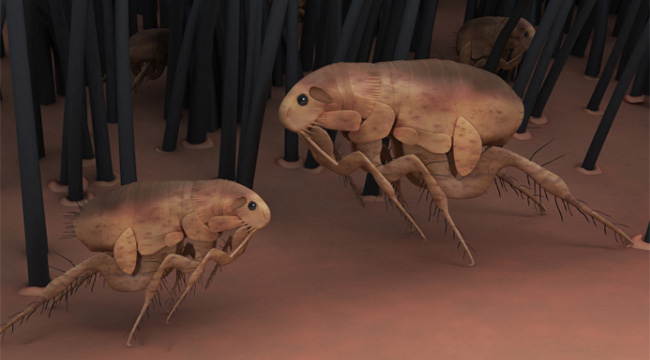
Plague
The disease is characterized by the sudden onset of fever and chills, followed by the development of swollen and painful lymph nodes (buboes) in the armpits, groin, and other areas 2 to 6 days following exposure. In addition to the bubonic form, septicemic infection may develop and involve other organs. Secondary infection of the lungs may lead to primary plague pneumonia, which then can be transmitted from person to person by aerosol.
The disease may be only mild and short-lived but frequently progresses to a severe form, with 25% to 60% fatality in untreated cases. In the United States, plague is maintained in wild rodent populations in the western states by flea transmission between rodents. Sylvatic plague may persist in these animal populations with varying severity, depending on the species’ resistance. Prairie dogs are susceptible to sudden die-offs. Outbreaks of plague have decimated prairie dog colonies in less than 1 to 2 years.
Rabbits, hares, carnivores, and wild ungulates have also been infected occasionally. Human cases of plague are reported most frequently in New Mexico, Arizona, California, Colorado, and Oregon (Fig. 8). More than 50% of the 284 cases in the United States reported from 1970 to 1990 were in New Mexico. Use insect repellents on skin or treat field clothes with permethrin. Practice good sanitation procedures when handling animals. Seek medical care and treatment if sick.
Murine Typhus Fever
The oriental rat flea, Xenopsylla cheopis, is considered the most important vector of the disease. The causative organism enters the bloodstream when feces of infected fleas are scratched or rubbed into a flea-bite wound or other breaks in the skin. Murine typhus is similar to epidemic or louse-borne typhus, but illness is much milder and the fatality rate in untreated cases is much lower.
Rodent-Borne Diseases
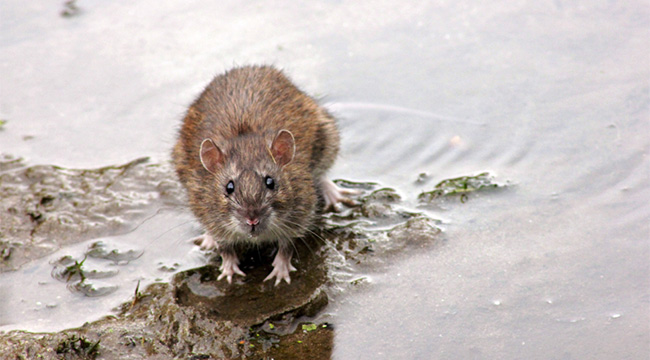
Rat-bite Fever
Salmonellosis
Food poisoning, the most common malady, is characterized by a sudden onset of abdominal pain, diahrrea, nausea, and vomiting. Due to the severity of this disease, medical attention is typically required.
Salmonella bacteria recognize few host barriers and are transmitted in many ways. One common form of transmission is through food contaminated by rat or mouse feces that contain Salmonella (especially S. typhimurium) organisms. It may also be spread by birds, which contaminate food with their feces or bacteria carried on their feet.
As with leptospirosis, the most important means of reducing the potential of this disease is through proper sanitation, rodent-proofing, and food storage and handling. Rodent control through trapping and appropriate use of toxicants may also be necessary.
Leptospirosis
The spirochetes (Leptospira spp., primarily L. icterohemorrhagiae) are found in contaminated water or on food, and may enter humans through mucous membranes or minute cuts or abrasions of the skin. Thus, Weil’s disease is often found in sailors, miners, sewer workers, and fish or poultry dealers. In a recent study in Hawaii, Norway rats, roof rats, and house mice were found to have high L. icterohemorrhagiae carrier rates.
Symptoms of leptospirosis infection range from none to severe, with acute fatalities. Many infections are characterized by diarrhea, chills, vomiting, myalgia, and kidney damage. Prevention is the most important means of dealing with this disease. Proper sanitation, rodent-proofing, and food storage and handling are essential. Medical attention is typically required.
Rickettsialpox
Tick-Borne Diseases
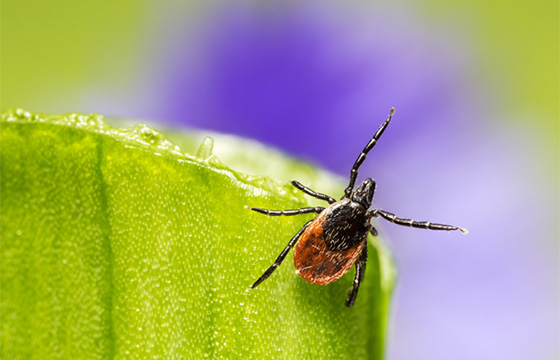
Colorado Tick Fever
The disease is confined to the mountains or highland regions of eight western states and western Canada. About 150 to 200 cases are reported each year; 1,438 cases were reported from 1980 to 1988 in eight western states, 63% of them in Colorado. CTF is transmitted to humans during the spring and early summer by the bite of the adult stage of the Rocky Mountain wood tick (Dermacentor andersoni) or by D. occidentalis in California.
The virus is maintained in nature through transmission by immature stages of ticks to various species of small mammals, particularly chipmunks, ground squirrels, and deer mice during the spring and summer months. The virus survives the winter in infected tick nymphs and adults.
The habitats that support the rodent hosts and tick vectors of the virus in the disease endemic region contain rocky surfaces with moderate shrub cover and scattered pines. Avoid tick-infested habitats during spring and early summer and use personal protection against ticks. No vaccines or treatment are available.
Tularemia
Tularemia is endemic throughout North America. Most of the 100 to 300 cases reported each year are from the area between the Rocky Mountains and the Mississippi River (especially Arkansas and Missouri). Most cases are acquired during the summer months from vector transmission; however, a second peak of cases occurs during the winter and is probably associated with rabbit hunting and carnivore trapping.
The bacteria is maintained in rabbits, hares, rodents, and birds by tick transmission. The natural reservoir for the bacteria includes infected ticks and animal species that are less susceptible and thus survive acute infections. Hard ticks, primarily D. andersoni, D. variabilis, and Haemaphysalis leporispalustris, and some flies, especially the deerfly (Chrysops discalis), can subsequently transmit the disease to humans.
Tularemia can also be transmitted directly to humans. Transmission routes include drinking contaminated water; eating contaminated food or improperly cooked game meat; inhaling aerosols contaminated with rodent urine, feces, or dust; cuts from contaminated knives or other instruments; and scratches or bites from infected animals. Use personal protection measures against ticks and practice good sanitation procedures when handling wild animals, especially rabbits. Promptly seek medical care and treatment if symptoms develop.
Rocky Mountain Spotted Fever
Rocky Mountain spotted fever (RMSF) is a moderate to severe illness caused by a rickettsia (Rickettsia rickettsii). The disease is distinguished by a sudden onset of high fever, severe headache, muscle pain, and a red rash starting on the extremities about 3 to 6 days after onset of symptoms and extending to the palms of hands and soles of feet and then to the rest of the body.
Delirium, coma, and death occur in about 1% to 2% of cases (15% to 20% in untreated cases). The disease is transmitted to humans in the United States by several hard tick (Ixodidae) species; D. andersoni in the Rocky Mountain region, D. variabilis in the east and southeast, and Amblyomma americanum in the south-central states.
In 1990, 649 cases of RMSF were reported from all regions of the United States, although more cases were reported in the south-Atlantic and south-central states. The natural hosts for the rickettsia are a variety of wild rodents, although rabbits and wild and domestic carnivores are involved in some cases.
The rickettsia survive the winter months in the tick vector and may be maintained by transovarial transmission from the female adult tick to its offspring. Avoid tick-infested areas and use personal measures to protect against tick bites. No vaccine is presently licensed for public use, but antibiotic treatment is effective and should be initiated without waiting for laboratory confirmation of clinical diagnosis.
Relapsing Fever
The most common type is caused by B. hermsii. Most human cases of this type of relapsing fever have been associated with log cabins or houses containing rodent nests (particularly of chipmunks and pine squirrels) and Ornithodoros hermsi ticks. This species of tick is active at night. Since it feeds rapidly and its bite is relatively painless, it may go unnoticed. The ticks feed on humans when the rodents disappear from the cabin nests because of rodent control measures or death from other diseases.
Most human cases occur during the summer months when the cabins are in use. Sporadic cases are reported primarily in the mountainous regions of the western United States and British Columbia; 159 cases were reported during 1985 to 1991 in 10 western states. Two outbreaks occurred among tourists and staff staying in cabins at the Grand Canyon in Arizona in 1973 and 1990. Inspect cabins for rodent use and nests, promptly remove nests, and treat cabins with insecticides or fumigate to kill any remaining ticks. Rodent-proof cabins to prevent rodent entry.
Two other species of relapsing fever spirochetes are transmitted occasionally to humans in the western United States by Ornithodoros ticks. The spirochete B. parkeri is transmitted by O. parkeri, mostly in California, and B. turicatae by the tick O. turicata. Five humans were infected with B. turicatae in Texas in 1990 following exploration of a cave containing infected ticks. For prevention, use personal protection against tick exposure. If sick with relapsing fever, seek medical care and appropriate antibiotic treatment.
Lyme Disease
A diagnostic rash, erythema migrans (EM), occurs in 65% to 75% of the cases. The rapidly expanding red rash starts at the tick bite site and expands to a nearly circular lesion of about 1 to 8 inches (2 to 20 cm). It often has a bulls-eye appearance with central clearing and/or darkening around the edge. Additional smaller skin lesions may appear at other sites of the body and may last for days or weeks.
Later symptoms, including heart, nervous system, and joint manifestations, may develop in untreated individuals. The joint pain and swelling usually occur one or more months after infection, may involve one or more joints, and may recur in different joints; the knee joint is most frequently affected. Domestic animals may be affected as well.
In 1992, 9,695 cases of Lyme disease were reported in 44 states Most cases were reported in the northeastern and upper midwestern states where the vector is the deer tick (Ixodes scapularis) and where transmission is predominately in residential communities.
Transmission in these other regions of the United States may be more sporadic and occur during outdoor activities related to recreation and occupation. Acquisition of Lyme disease by humans peaks during the summer months when the tick nymphs are feeding on hosts. Because of its small size, the attached nymph frequently goes unnoticed and is not removed.
The transmission cycle of Lyme disease begins when larvae acquire spirochetes while feeding on infected white-footed mice, chipmunks, other rodents, and birds. Engorged larvae drop to the ground, molt to the nymphal stage, and wait until the following summer to attach to and transmit spirochetes to susceptible rodents, birds, larger mammals, and humans. Uninfected larvae subsequently feed on these wild vertebrate hosts to complete the transmission cycle. The engorged nymphs drop to the ground and molt into adult ticks which are active during the fall and following spring and feed on large mammals, primarily deer.
Deciduous forest is the predominant habitat for the tick vector and vertebrate hosts in the Northeast and Midwest. Other prime habitats include forested areas interspersed with residential development and grass and shrub areas, particularly along forest edges.
Patients treated with appropriate antibiotics during the early stages of the disease usually have rapid and complete recovery. Even patients treated during later stages generally respond well and recover. No vaccine is available except for domestic dogs. Avoid locations with ticks during seasonal activity periods, use personal measures to protect against ticks, become knowledgeable about the symptoms of Lyme disease, and seek medical care and treatment if infected.
Other Tick-Borne Diseases
Symptoms are similar to those of RMSF: an acute fever with headache, muscle ache, and nausea. A rash appears less frequently and for a much shorter duration. From 1986 to 1991, 262 cases and 4 fatalities were reported in 23 states, the majority occurring in Missouri and Oklahoma. Use personal protection against ticks and seek medical care and treatment if sick.
Powassan encephalitis is caused by a virus (flavivirus) which is transmitted by the ticks I. cookei, D. andersoni, and other Ixodes spp. Symptoms include the sudden onset of fever, sore throat, sleepiness, headache, and disorientation. Encephalitis, meningitis, and, occasionally, partial paralysis may develop. Natural hosts are marmots, sciurid rodents, rabbits, hares, carnivores, and possibly birds. Only 19 cases have been reported, all in New York, Pennsylvania, Ontario, and Quebec. Use personal protection to reduce exposure to ticks. No treatment is available.
Babesiosis is a protozoan disease with gradual onset of fever, sweating, loss of appetite, fatigue, general muscle ache, and possibly prolonged anemia. The disease can be severe and sometimes fatal. A protozoan, Babesia microti, is transmitted among wild rodents, particularly white-footed mice, by the tick I. scapularis along the coastal areas of New England and on adjacent offshore islands. This tick may be infected occasionally with both B. microti and the Lyme disease spirochete. Use personal protection measures to prevent tick exposure and seek medical care if sick.
Bird-Borne Diseases
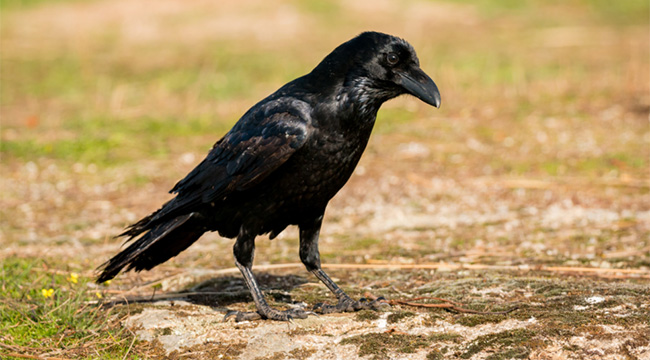
Histoplasmosis
Bird droppings enrich the soil and promote growth of the fungus. Notable sources for histoplasmosis infection include: (1) traditional bird roosts, (2) poultry farms, (3) enclosed buildings where birds or bats have roosted, and (4) natural or organic fertilizers. In addition, the fungus can grow in various natural soils, with or without droppings. In some areas, such as the Ohio Valley, histoplasmosis is so widespread that 95% of the human population becomes infected, whether associated with birds or not.
Infection by only a few spores generally produces a mild case in humans and people are often unaware that they have contracted the disease (unless it is detected later through a skin reactivity test or lung X ray that reveals healed lesions). A more severe infection may result in an acute respiratory illness with flu-like symptoms (in fact, histoplasmosis is often misdiagnosed as flu).
The most serious infections, usually resulting from massive spore inhalation, may involve a dissemination of the fungus through the blood stream. Such cases may become chronic, recurring at later times, and affect organs other than the lungs. Treatment with an antifungal agent such as amphotericin B or imidazole ketoconazole may be prescribed in more severe cases.
Not all blackbird or starling roosts pose immediate public health problems related to histoplasmosis. The histoplasmosis fungus grows readily in the soil beneath bird roosts, but it cannot form spores under the acidic conditions of fresh droppings. An active, undisturbed roost may only give off a few spores. Old or abandoned roosts, however, can pose a significant threat to human health.
After the droppings have dried out or been leached by the rain, the right conditions develop for spore release. If the soil is stirred up under dusty conditions, as may be the case in land clearing or bulldozing, massive amounts of spores may be released. Severe epidemics have occurred in association with bird roosts under such conditions.
Birds in large roosts can be dispersed by the use of various frightening devices or by roost thinning or clearing (see Bird Dispersal Techniques). Precautions should be taken when working around an old or abandoned roost site. It is wise to test for the presence of histoplasmosis before beginning any work. Wear a self-contained breathing apparatus or face mask with a dust filter (less than 2 microns) to prevent inhalation of the spores. Wear protective clothing, gloves, and boots that can be removed and disinfected with formalin and washed.
If an area that was once a bird roost is going to be cleared or bulldozed, the area should be dampened with water or work should be done when the weather is wet or cold or both. Avoid working under dry, dusty conditions in late summer. A roost may be decontaminated by spraying it with a 3% to 5% solution of formaldehyde before clearing, but this option is very expensive.
Salmonellosis
The Salmonella group of bacteria exists nearly everywhere in the environment and, unfortunately, several serotypes are pathogenic to humans and other animals. Salmonellosis can lead to severe cases of gastroenteritis (food poisoning), enteric fever septicemia (blood poisoning), and death. Food poisoning, the most common malady, is characterized by a sudden onset of abdominal pain, diahrrea, nausea, and vomiting. Due to the severity of this disease, medical attention is typically required.
Salmonella bacteria recognize few host barriers and are transmitted in many ways. One common form of transmission is through food contaminated by rat or mouse feces that contain Salmonella (especially S. typhimurium) organisms. It may also be spread by birds, which contaminate food with their feces or bacteria carried on their feet.
As with leptospirosis, the most important means of reducing the potential of this disease is through proper sanitation, rodent-proofing, and food storage and handling. Rodent control through trapping and appropriate use of toxicants may also be necessary.
Ornithosis
Ornithosis is an infectious respiratory disease caused by Chlamydia psittaci, a viruslike organism that affects humans, pets, and livestock. It usually leads to a mild pneumonia-or flu-like infection, but it can be a rapidly fatal disease (less than 1% of the cases reported in the United States). In humans many cases occur that are undetected or incorrectly diagnosed.
Pigeons are most commonly associated with the transmission of ornithosis to humans. Birds have adapted to the disease and show no symptoms, but act as healthy carriers, shedding the organism in their feces, which later may become airborne as dust. The disease may also be contracted from parakeets, farm poultry, or waterfowl.
People working in dry, dusty areas where bird droppings are present, should wear face masks or respirators to avoid inhaling airborne avian fecal material. Spray work areas with water and/or disinfectants to minimize the potential for airborne infections particles. Medical attention, including antibiotic treatments are recommended for disease treatment.
Other Bird-Borne Diseases
The virus can be carried in an infective state in the birds’ intestines or on their feet for up to 30 hours. It is generally fatal to baby pigs and causes weight loss in adults. Starlings may also be involved in the transmission of hog cholera. Cryptococcosis is a fungal disease spread by pigeons and starlings that results in chronic, usually fatal, meningitis.
Various species of birds may also play a part in the transmission of encephalitis, Newcastle disease, aspergillosis, toxoplasmosis, pseudotuberculosis, avian tuberculosis, and coccidiosis.

